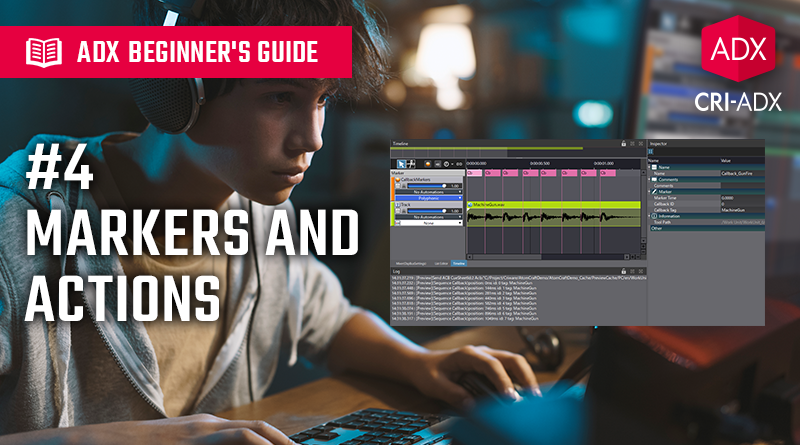ADX Beginner’s Guide #4 – Markers and Actions
In the previous blog from this beginner’s series, we used Selectors and Game Variables to create sound variations based on the game context. This time we will see how to create even more complex sound behaviours by adding Sequence Markers and Actions to the timeline of the Cues.
Sequence Markers
A Sequence Marker is an object that triggers a specific behavior when the playback reaches its position on the Cue’s timeline.
The different types of markers will affect the playback in various ways:
- Sequence Loop Marker: Adds a loop to the Sequence (unlike a material loop which is strictly limited to a Waveform Region). The start position, end position, and number of loops can be specified.
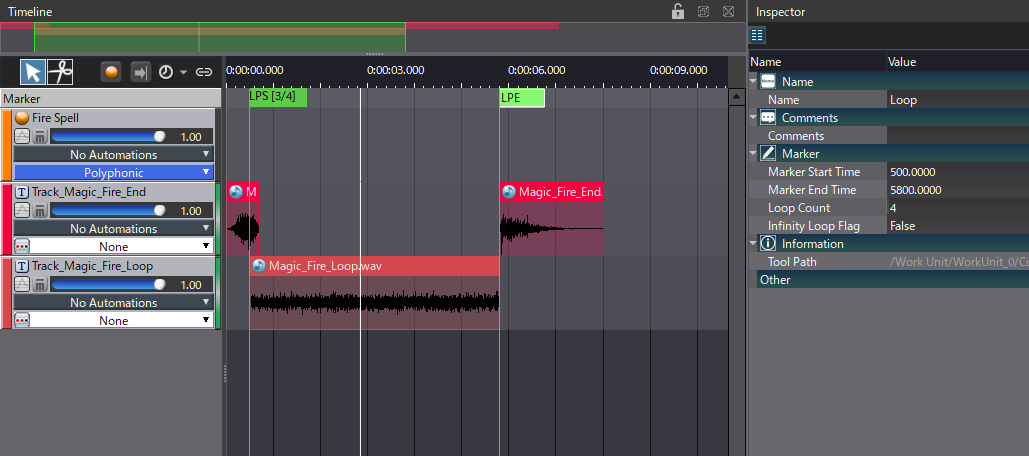
- Sequence Start Marker: Starts a sequence. It can be used to start the playback in the middle of a Waveform Region. When multiple Start Markers are present, the starting position will be selected randomly among them each time the Cue is triggered.
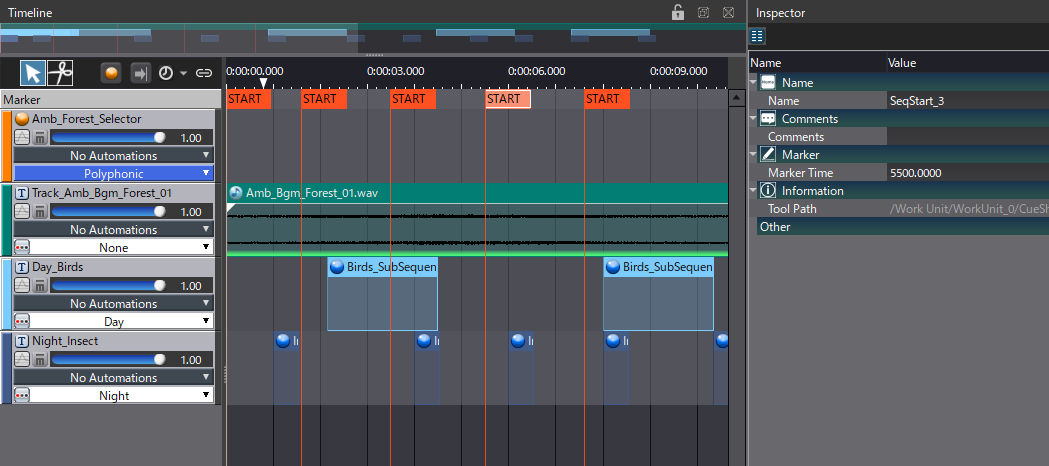
- Sequence End Marker: Ends a sequence. It can be used to stop the playback in the middle of a Waveform Region.
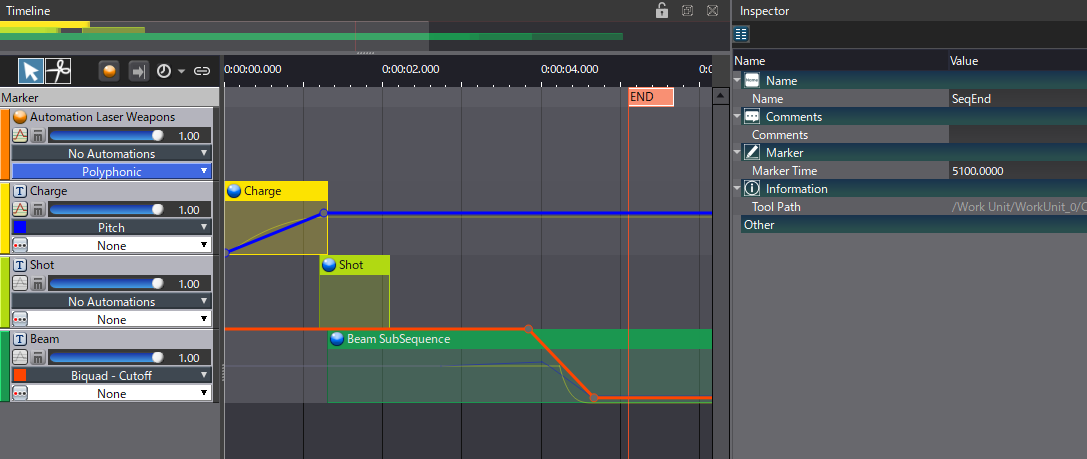
- Sequence Callback Marker: Adds a Callback marker. The game engine will receive a notification when the playback reaches the marker, allowing it to trigger gameplay events, VFX, animations, etc… Different IDs and tags can be specified for each Callback.

- Sequence End marker for REACT: Generates a sequence end for REACT. It makes it possible to stop REACT (the system used for ducking) before the end of the playback.

To create a Sequence Marker:
- Right-click on a Cue in the Work Units Tree.
- Select New Object, Create Marker.
- In the Add Marker window, select the Type and change its properties accordingly.
- Once placed on the Timeline, markers can be dragged to adjust their timing.

Sequence Markers can also be created automatically once the Waveform Region is added to a Sequence by embedding markers with specific character strings in the original wave file. For instance, if a marker is named “CALLBACK” in your wave file, a Callback Sequence Marker will automatically be inserted at the right position in the Cue’s Sequence. This feature can be enabled and configured by selecting Sequence marker auto-generation settings for waveform registration in the View menu.
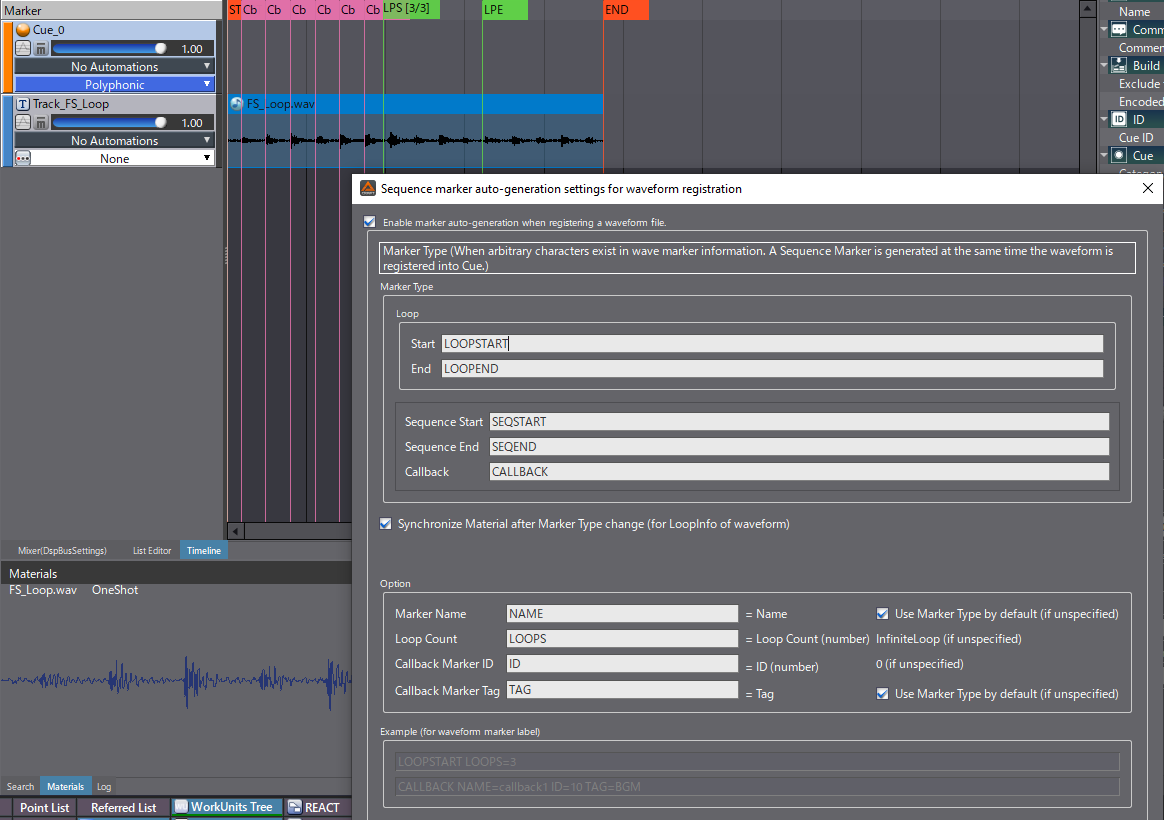
Actions
Actions allow you to play, stop, and change the parameters of another Cue or group of Cues (via the Category function) from the timeline of the current Cue.
A special Track called an Action Track is created in the main Cue, associated with a Target Cue (or a Category), and then an Action is added to the timeline allowing the main Cue to control the Target Cue.
To add an Action to a Cue:
- Select a Cue.
- Right-click on the Cue, and select New Object, Create Action Track.
- On the header of the Action Track, drag and drop the Cue or the Category you want to target.
- Then on the Action Track, right-click to create a new Action on the timeline.

Different Actions can be inserted on an Action Track:
- Start: An action to start playing the targeted Cue.
- Stop: An action to stop the target being played back (a fade-out can be specified).
- Pause: An action to pause the target being played back (a fade-out can be specified).
- Resume: An action to resume the target being paused (a fade-in can be specified).
- Mute: Mutes or unmutes the specified track from the targeted Cue (fades can be specified).
- Set selector label: Select a selector label for the targeted Cue. See the previous blog for more information about Selectors.
- Specify Block Transition Destinations: Sets the specified Block of the targeted Cue as its next destination Block (used for interactive music).
- Playback Parameter: Updates a playback parameter (e.g. volume, pitch, etc.) of the target over a certain time and following a given curve.
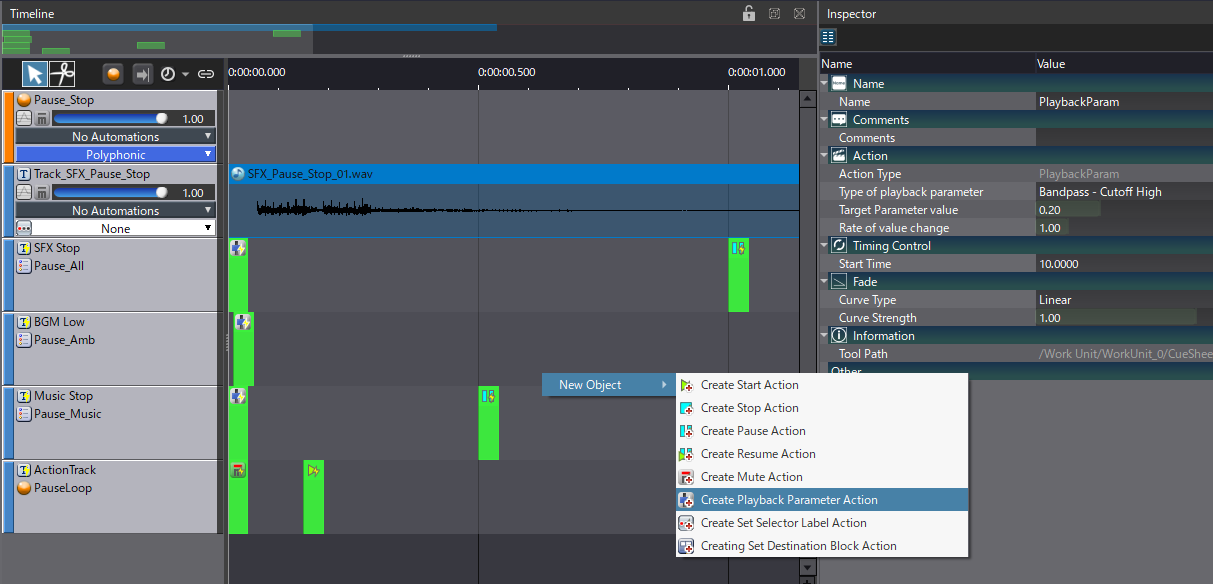
The following parameters can be modified:
- Volume
- Pitch
- Playback Rate
- BandPass Filters
- Biquad Filters
- Release Time of Envelope Generators
- Pan3D
- Bus Sends
- AISAC Controls
A good example of usage of Actions is a pause system where a Cue triggers some Actions to Pause a category of sounds and to Start a background music. Another Cue can be used to Resume the paused sounds and Stop the music.
By adding both the Sequence Markers and the Actions to your arsenal, you should now be able to implement more complex sounds in your game. In the next post of this series, we will see how to add effects and use the mixing system of Atom Craft.


